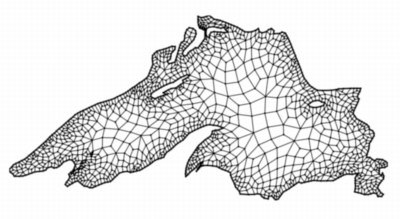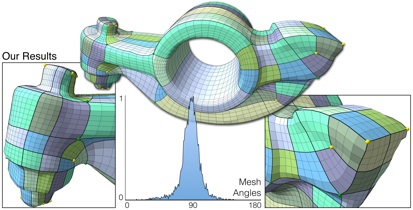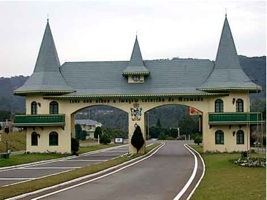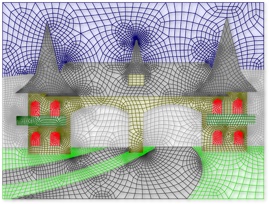Marcelo Siqueira’s Web Spot




Daniels II, J., Lizier, M., Siqueira, M., Silva, C.T., Nonato, L.G.
“Template-Based Quadrilateral Meshing”,
Computer & Graphics, 35(3), 2011, p.471-482.
Abstract:
Generating quadrilateral meshes is a highly non-trivial task, as design decisions are frequently driven by specific application demands. Automatic techniques can optimize objective quality metrics, such as mesh regularity, orthogonality, alignment and adaptivity; however, they can not make subjective design decisions. There are a few quad meshing approaches that offer some mechanisms to include the user in the mesh generation process; however, these techniques either require a large amount of user interaction or do not provide necessary or easy to use inputs. Here, we propose a template-based approach for generating quad-only meshes from triangle surfaces. Our approach offers a flexible mechanism to allow external input, through the definition of alignment features that are respected during the mesh generation process. While allowing user inputs to support subjective design decisions, our approach also takes into account objective quality metrics to produce semi-regular, quad-only meshes that align well to desired surface features.
Paper (PDF)
References (BibTeX)

Ramaswami, S., Siqueira, M., Sundaram, T., Gallier, J., Gee, J.
“Constrained quadrilateral meshes of bounded size”,
International Journal of Computational Geometry and Applications , 15(1), 2005, p.55-98.
Abstract:
We introduce a new algorithm to convert triangular meshes of polygonal regions, with or without holes, into strictly convex quadrilateral meshes of small bounded size. Our algorithm includes all vertices of the triangular mesh in the quadrilateral mesh, but may add extra vertices (called Steiner points). We show that if the input triangular mesh has t triangles, our algorithm produces a mesh with at most floor(3t / 2) + 2 quadrilaterals by adding at most t+2 Steiner points, one of which may be placed outside the triangular mesh domain. We also describe an extension of our algorithm to convert constrained triangular meshes into constrained quadrilateral ones. We show that if the input constrained triangular mesh has t triangles and its dual graph has h connected components, the resulting constrained quadrilateral mesh has at most floor(3t / 2) + 4h quadrilaterals and at most t+3h Steiner points, one of which may be placed outside the triangular mesh domain. Examples of meshes generated by our algorithm, and an evaluation of the quality of these meshes with respect to a quadrilateral shape quality criterion are presented as well.
Paper (PDF)
References (BibTeX)





Lizier, M., Siqueira, M., Daniels II, J., Silva, C.T., Nonato, L.G.
“Template-Based Quadrilateral Mesh Generation from Imaging Data”,
The Visual Computer, 27(10), 2011, p. 887-903.


Abstract:
This paper describes a novel template-based meshing approach for generating good quality quadrilateral meshes from 2D digital images. This approach builds upon an existing image-based mesh generation technique called Imesh, which enables us to create a segmented triangle mesh from an image without the need for an image segmentation step. Our approach generates a quadrilateral mesh us- ing an indirect scheme, which converts the segmented triangle mesh created by the initial steps of the Imesh technique into a quadrilateral one. The triangle-to-quadrilateral con- version makes use of template meshes of triangles. To en- sure good element quality, the conversion step is followed by a smoothing step, which is based on a new optimization- based procedure. We show several examples of meshes generated by our approach, and present a thorough experimental evaluation of the quality of the meshes given as examples.
Paper (PDF)
References (BibTeX)
